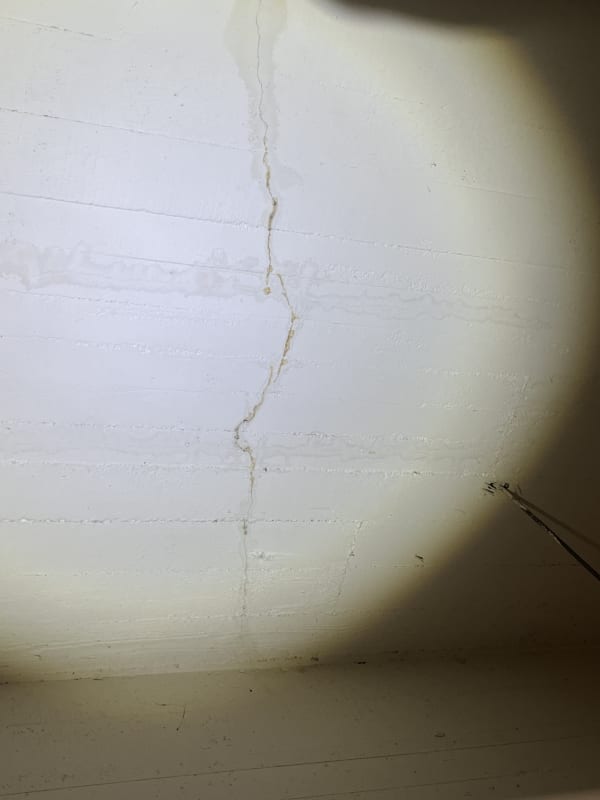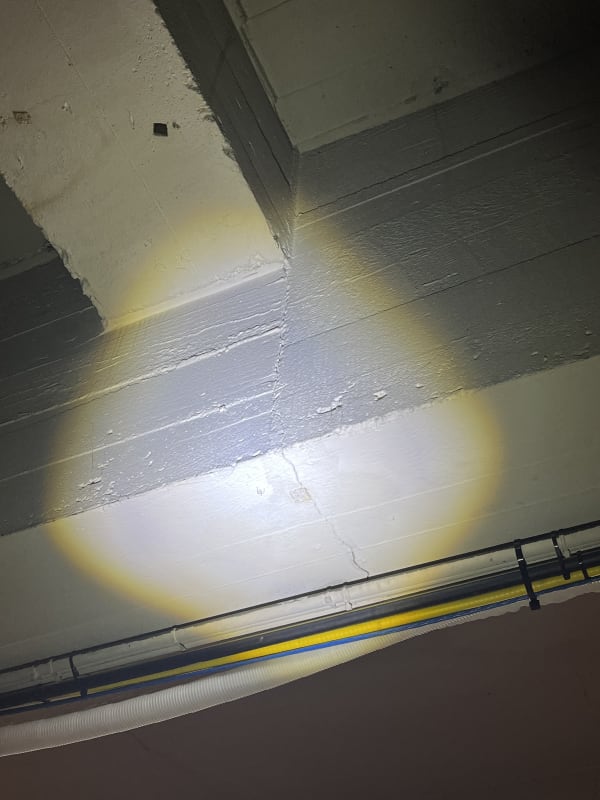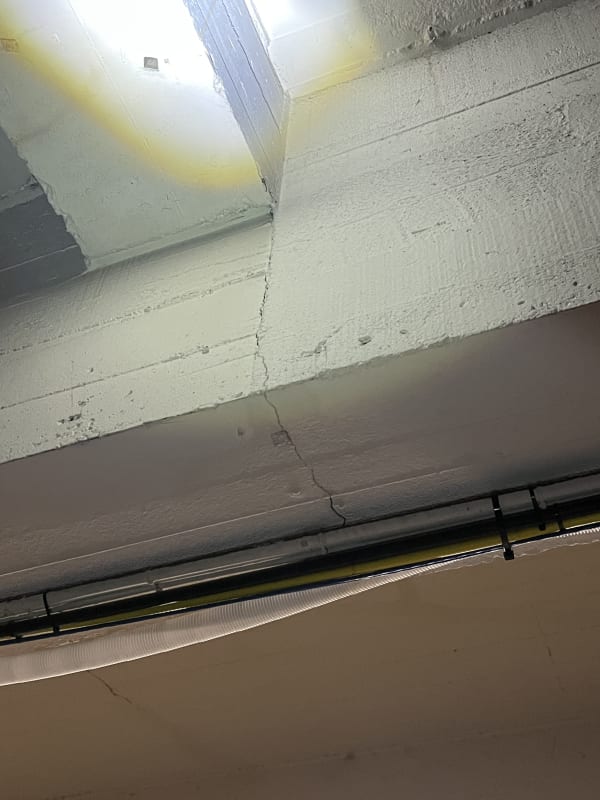McStructures30
Structural
- Feb 16, 2023
- 2
Hello! I am dealing with an elevated formed one-way concrete slab spanning between steel beams that are cast into concrete as well where cracks have formed in the slab apparently due to sprinkler lines going off and flooding that first floor. The concrete slab is pretty old, the steel beams within the concrete are WF shapes. The claim is that these cracks were not present before the flooding and there is already moisture showing from the underside, see pic attached. The concrete around the steel beams are also cracks all the way under and around.
I am wondering how would you recommend to reinforce the slab or repair these cracks? there is only about 3 or 4 large cracks in an isolated area where the water was above. I am thinking to bolt a channel to the concrete encased beams with end plates along the cracks between the beams which are about 6 to 8 ft apart. most of the beams are parallel with the slab span (perp to beams) but about 2 or 3 are maybe 4 ft wide and parallel to the beams, I'd be more worried about these parallel to beam ones running across the slab. I am thinking of an epoxy injection into the beam cracks (concrete around beams is likely only for shear and fireproofing) just to seal those up.
Let me know your thoughts how to repair!
(




I am wondering how would you recommend to reinforce the slab or repair these cracks? there is only about 3 or 4 large cracks in an isolated area where the water was above. I am thinking to bolt a channel to the concrete encased beams with end plates along the cracks between the beams which are about 6 to 8 ft apart. most of the beams are parallel with the slab span (perp to beams) but about 2 or 3 are maybe 4 ft wide and parallel to the beams, I'd be more worried about these parallel to beam ones running across the slab. I am thinking of an epoxy injection into the beam cracks (concrete around beams is likely only for shear and fireproofing) just to seal those up.
Let me know your thoughts how to repair!
(




